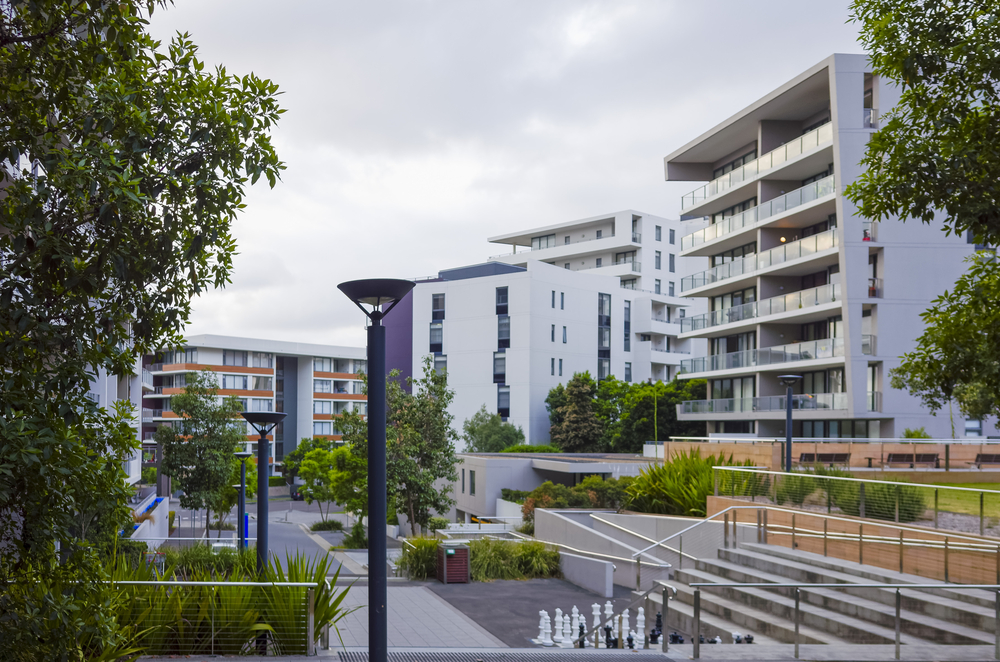Rivian Stock Is Flying After EV Maker Unveils Its R2 and R3 Models
Rivian Automotive stock was surging after the company introduced its new vehicle platform on Thursday.
Rivian Automotive stock was surging after the company introduced its new vehicle platform on Thursday.
Investors knew the car was coming, but the electric vehicle start-up sprinkled a couple of extra surprises in its presentation to the delight of its shareholders.
As its name suggests, R2—unveiled Thursday afternoon—is Rivian’s second vehicle platform. It’s a lower-cost product that should enable the company to widen its addressable market with a cheaper price tag. The R2 will start at around $45,000, and is slated to hit the streets in 2026.
The timing was the first surprise. CEO R.J. Scaringe said the car will ship in the first half of 2026. That brings some certainty for investors and, of course, the sooner the better.
“I’m so excited about this vehicle,” said Scaringe. “I’m so excited about what it represents for us as a company in terms of achieving scale.”
Rivian’s first platform, R1, is the base for the R1T pickup truck and R1S SUV. Those two vehicles start at around $75,000.
The R2 SUV shown at the event has Rivian’s trademark look. The vehicle—which could be called the R2S if Rivian sticks with its first platform’s naming conventions—is a smaller version of the R1S. The wheelbase is a little shorter than that of the R1S.
The R2’s per-charge range will exceed 300 miles and there will be a tri-motor version that goes from zero to 60 miles an hour in about three seconds.
The second surprise was another vehicle—the R3 and sportier trim called the R3X. It’s another vehicle that will be built on the platform. Pricing and timing for the R3 weren’t part of Scaringe’s prepared remarks. Rivian didn’t immediately respond to a request for comment.
Rivian shares were up 13.8% in late trading at $12.55, while the S&P 500 and Nasdaq Composite were up about 0.9% and 1.4%, respectively.
The stock had gotten a lift even before the R2 launch event, which started around 1 p.m. ET Thursday, thanks to a new call to buy the shares on Wall Street.
Earlier Thursday, Jefferies analyst Philippe Houchois launched coverage of Rivian with a Buy rating and a $16 price target.
“Rivian has looked closest to Tesla in spirit, with its own software stack, strong brand identity, global potential, and similar growth pain,” wrote the analyst.
(Product launch events weren’t what Houchois was referring to, looked a little like a Tesla product launch event run by Elon Musk.)
The cost of the new platform will be key, the analyst said.
Rivian “is facing two critical if not existential tests this year: (1) deliver a $35,000-to-$40,000 reduction in unit production costs from redesign, purchasing, and manufacturing efficiency; and (2) demonstrate the R2 model can be developed at a significantly lower cost than R1,” wrote Houchois in his coverage launch report.
The new vehicle and Buy rating should come as a relief for investors. Coming into Thursday trading, Rivian stock was down about 53% so far in 2023. Slowing demand growth for EVs, along with disappointing production guidance from Rivian, has pushed down shares.
Rivian expects to produce about 57,000 units in 2024, roughly the same amount produced in 2023. But Houchois sees a silver lining there.
“Slower EV demand and planned second-quarter [plant] shutdowns will constrain growth this year but could also help deliver the sharp $20,000 reduction in unit costs to achieve positive gross margin exiting 2024,” wrote Houchois.
Rivian hasn’t achieved the scale required yet to generate positive profits and cash flow. It delivered about 50,000 unit to customers in 2023. Tesla wasn’t producing consistent profits until it was delivering roughly four times that amount.
Wall Street expects Rivian to use about $4.3 billion in cash in 2024. It ended 2023 with about $9.4 billion in cash, and $10.5 billion in total liquidity.
Overall, 55% of analysts covering Rivian stock have Buy ratings, according to FactSet. The average Buy-rating ratio for stocks in the S&P 500 is about 55%. The average analyst price target for Rivian stock is about $17.
 Copyright 2020, Dow Jones & Company, Inc. All Rights Reserved Worldwide. LEARN MORE
Copyright 2020, Dow Jones & Company, Inc. All Rights Reserved Worldwide. LEARN MORE
This stylish family home combines a classic palette and finishes with a flexible floorplan
Just 55 minutes from Sydney, make this your creative getaway located in the majestic Hawkesbury region.
Impact investing is becoming more mainstream as larger, institutional asset owners drive more money into the sector, according to the nonprofit Global Impact Investing Network in New York.
In the GIIN’s State of the Market 2024 report, published late last month, researchers found that assets allocated to impact-investing strategies by repeat survey responders grew by a compound annual growth rate (CAGR) of 14% over the last five years.
These 71 responders to both the 2019 and 2024 surveys saw their total impact assets under management grow to US$249 billion this year from US$129 billion five years ago.
Medium- and large-size investors were largely responsible for the strong impact returns: Medium-size investors posted a median CAGR of 11% a year over the five-year period, and large-size investors posted a median CAGR of 14% a year.
Interestingly, the CAGR of assets held by small investors dropped by a median of 14% a year.
“When we drill down behind the compound annual growth of the assets that are being allocated to impact investing, it’s largely those larger investors that are actually driving it,” says Dean Hand, the GIIN’s chief research officer.
Overall, the GIIN surveyed 305 investors with a combined US$490 billion under management from 39 countries. Nearly three-quarters of the responders were investment managers, while 10% were foundations, and 3% were family offices. Development finance institutions, institutional asset owners, and companies represented most of the rest.
The majority of impact strategies are executed through private-equity, but public debt and equity have been the fastest-growing asset classes over the past five years, the report said. Public debt is growing at a CAGR of 32%, and public equity is growing at a CAGR of 19%. That compares to a CAGR of 17% for private equity and 7% for private debt.
According to the GIIN, the rise in public impact assets is being driven by larger investors, likely institutions.
Private equity has traditionally served as an ideal way to execute impact strategies, as it allows investors to select vehicles specifically designed to create a positive social or environmental impact by, for example, providing loans to smallholder farmers in Africa or by supporting fledging renewable energy technologies.
Future Returns: Preqin expects managers to rely on family offices, private banks, and individual investors for growth in the next six years
But today, institutional investors are looking across their portfolios—encompassing both private and public assets—to achieve their impact goals.
“Institutional asset owners are saying, ‘In the interests of our ultimate beneficiaries, we probably need to start driving these strategies across our assets,’” Hand says. Instead of carving out a dedicated impact strategy, these investors are taking “a holistic portfolio approach.”
An institutional manager may want to address issues such as climate change, healthcare costs, and local economic growth so it can support a better quality of life for its beneficiaries.
To achieve these goals, the manager could invest across a range of private debt, private equity, and real estate.
But the public markets offer opportunities, too. Using public debt, a manager could, for example, invest in green bonds, regional bank bonds, or healthcare social bonds. In public equity, it could invest in green-power storage technologies, minority-focused real-estate trusts, and in pharmaceutical and medical-care company stocks with the aim of influencing them to lower the costs of care, according to an example the GIIN lays out in a separate report on institutional strategies.
Influencing companies to act in the best interests of society and the environment is increasingly being done through such shareholder advocacy, either directly through ownership in individual stocks or through fund vehicles.
“They’re trying to move their portfolio companies to actually solving some of the challenges that exist,” Hand says.
Although the rate of growth in public strategies for impact is brisk, among survey respondents investments in public debt totaled only 12% of assets and just 7% in public equity. Private equity, however, grabs 43% of these investors’ assets.
Within private equity, Hand also discerns more evidence of maturity in the impact sector. That’s because more impact-oriented asset owners invest in mature and growth-stage companies, which are favored by larger asset owners that have more substantial assets to put to work.
The GIIN State of the Market report also found that impact asset owners are largely happy with both the financial performance and impact results of their holdings.
About three-quarters of those surveyed were seeking risk-adjusted, market-rate returns, although foundations were an exception as 68% sought below-market returns, the report said. Overall, 86% reported their investments were performing in line or above their expectations—even when their targets were not met—and 90% said the same for their impact returns.
Private-equity posted the strongest results, returning 17% on average, although that was less than the 19% targeted return. By contrast, public equity returned 11%, above a 10% target.
The fact some asset classes over performed and others underperformed, shows that “normal economic forces are at play in the market,” Hand says.
Although investors are satisfied with their impact performance, they are still dealing with a fragmented approach for measuring it, the report said. “Despite this, over two-thirds of investors are incorporating impact criteria into their investment governance documents, signalling a significant shift toward formalising impact considerations in decision-making processes,” it said.
Also, more investors are getting third-party verification of their results, which strengthens their accountability in the market.
“The satisfaction with performance is nice to see,” Hand says. “But we do need to see more about what’s happening in terms of investors being able to actually track both the impact performance in real terms as well as the financial performance in real terms.”
This stylish family home combines a classic palette and finishes with a flexible floorplan
Just 55 minutes from Sydney, make this your creative getaway located in the majestic Hawkesbury region.






















